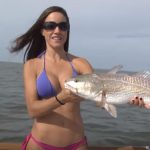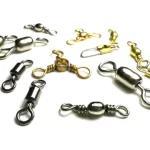When the ice finally retreats and spring sun begins to shine, anglers across northern waters prepare for one of the most rewarding – and challenging – bass fishing windows of the year: ice-out. While bites can be few and far between, the payoff can be massive. Largemouth bass emerge from winter haunts, seeking warmth and opportunity, setting the stage for some of the biggest catches of the season.

Lethargic but Lurking: Understanding Bass Behavior at Ice-Out
During this period, bass metabolism remains slow. These fish aren’t hunting actively, instead conserving energy and feeding opportunistically. Rather than pursuing fast-moving targets, bass prefer slow-moving, high-calorie meals. That means presentations must match this low-energy mood.
Three standout bait options for ice-out conditions include:
-
A black hair jig
-
A large single swimbait
-
A black skirted jig
Black remains a top color choice—not only for its contrast and visibility in stained or cold water, but for its ability to create a larger profile without increasing size. Both hair jigs and skirted jigs should rely on passive action; quality materials like synthetic craft fur provide ideal movement with minimal input.
The 1/2-ounce Keitech Model 1 Casting Jig is a strong option, particularly when crawled along the bottom. Paired with a classic Uncle Josh Pork Frog trailer, the slow-moving presentation mimics natural forage with realistic motion and scent.
For swimbaits, the Keitech Fat Swing Impact in 4.3″ or 4.8″ sizes performs exceptionally well. Matched with a jighead between 1/8 to 1/4 ounce, this bait can be dragged slowly along the lake bottom to imitate bluegill or perch. Proven color choices include Bluegill Flash, Ayu, Pro Blue Red Pearl, and Silver Flash Minnow.
Fire It Up with Red
Red-colored baits often excel during ice-out, especially as crayfish emerge in reddish hues after winter dormancy. Bass respond strongly to this trigger color, making red-patterned moving baits a smart addition to any cold-water arsenal.
Top picks include:
-
Evergreen Jack Hammer Chatterbait in Fire Craw
-
Rapala DT6 in Demon
-
Rapala Shad Rap (size 5 or 7)
-
Rapala Rippin’ Rap (1/2-ounce)
These baits cover a range of profiles and actions. The Shad Rap, a balsa crankbait, delivers tight wobble and natural vibration that draws strikes. The Rippin’ Rap adds aggressive sound and flash, perfect for covering water. Mixing retrieves—such as fast cranking followed by brief pauses—can often trigger hesitant bass into committing.
Cadence Is King: Jerkbaits and Glide Baits
Early spring calls for finesse in presentation. Two of the most productive bait styles this time of year—jerkbaits and glide baits—require a dialed-in cadence to succeed.
Jerkbaits like the Rapala Maverick 110 work well in cold water due to their fixed tungsten weights and suspending design. While the traditional “twitch-twitch-pause” approach still works, longer pauses and shorter, subtle twitches tend to draw more attention when bass are sluggish.
Glide baits follow a similar cadence-dependent logic. These slow-sinking lures can be manipulated to mimic a distressed baitfish by alternating twitch speeds and allowing for brief pauses. Watching how bass respond—especially in clear, shallow water—can help adjust the presentation on the fly. Bright-colored baits like bone white increase visibility and allow anglers to track the bait’s path.
Top glide bait options include:
-
River2Sea S-Waver
-
Spro Chad Shad
Both offer a near-suspending action and excel in colder water with minimal effort.
Match Tactics to Conditions
Success during ice-out fishing heavily depends on adapting to the day’s conditions. Weather and barometric pressure shifts can greatly impact bass activity. A drop in pressure, even on a cold and snowy day, can lead to a feeding window where giant largemouths become catchable. Watching for signs of rising water temps, shallow sunlit bays, and pre-spawn movement can guide bait selection and technique.
No matter the bait, retrieve speed, or waterbody, staying patient and persistent is key. Ice-out fishing doesn’t yield numbers, but it does deliver giants—and those few bites can define an entire season.
Image/Source: Wired2Fish





